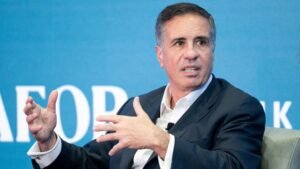JPMorgan Chase Leadership Transition: What It Means for the Future of Banking
In a significant shake-up at JPMorgan Chase, the bank announced that Daniel Pinto, its president and chief operating officer, will be stepping down from his roles in the coming months. This change has initiated a wave of speculation regarding the succession of CEO Jamie Dimon, who has hinted at retiring within the next five years. As the largest and most profitable U.S. bank by assets, JPMorgan’s executive decisions have critical implications not just for its stakeholders, but also for the broader financial landscape.
The Timing of Transition
Daniel Pinto has served at JPMorgan and its predecessor institutions for over four decades. His impending departure comes after a tenure marked by pivotal contributions, especially in commercial banking. Pinto will officially step down as COO and president in June, while his retirement is set for the end of 2026, allowing for a gradual transition of responsibilities.
As the bank prepares for this pivotal change, the appointment of Jennifer Piepszak as the new COO is a focal point. Previously co-heading the commercial and investment bank, Piepszak is seen as a critical player in ensuring the continuity of operations during this transitional phase.
Settling Speculation: Piepszak’s Intent
What sets this leadership shake-up apart is how Piepszak has publicly addressed her ambitions. Unlike many executive appointments that typically fuel speculation about potential future CEOs, Piepszak has made it clear that she prefers to maintain a supportive role rather than vie for the top position. According to a company spokesperson, "Jenn has made clear her preference for a senior operating role working close with Jamie and in support of the top leadership team, and does not want to be considered for the CEO position at this time." Such transparency highlights a culture of collaboration at JPMorgan that may foster stability as the bank navigates through its next chapter.
Implications for Succession Planning
With Jamie Dimon, 68, signaling that his tenure could conclude within five years, the spotlight turns to the bank’s succession planning. Dimon has been a transformative leader for JPMorgan, steering it through tumultuous markets and positioning it as a formidable player on the global stage. While significant names have emerged as potential successors—like Piepszak and Marianne Lake, the consumer banking chief—this latest development invites scrutiny about who will eventually step into Dimon’s shoes.
At Extreme Investor Network, we understand that such transitions are closely watched not just for immediate implications but for long-term strategy. The next CEO of JPMorgan will likely face a landscape transformed by digital banking, changing consumer preferences, and the increasing importance of sustainability practices. The choices made in the coming months will shape the bank’s vision and operational focus, thereby influencing investor sentiment and market dynamics.
The Road Ahead
As we keep an eye on JPMorgan Chase, it’s crucial to pay attention to how the new COO implements operational strategies and navigates market challenges. Given the bank’s global footprint and diverse business lines, Piepszak’s approach to integrating technology with traditional banking practices will serve as a litmus test for the broader industry.
For those invested in the financial sector, the changes at JPMorgan Chase underscore the importance of adaptive leadership in an era characterized by rapid change and uncertainty.
Stay tuned to Extreme Investor Network for the latest insights into this ongoing story and more updates on how leadership transitions can impact not only the institutions involved but the entire financial ecosystem.

